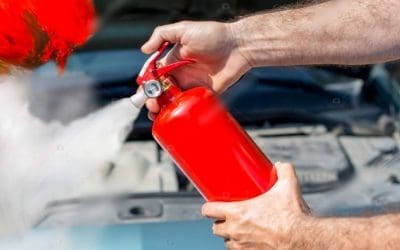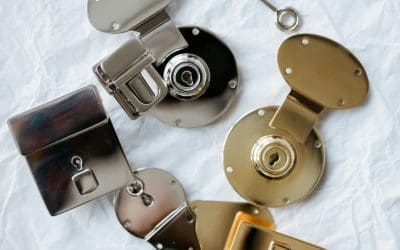Fire may occur at any time, at any place, at home, at the office, or in your car. The fire extinguisher and proper knowledge of its usage can be the difference between a small controlled situation and a disaster.
This easy-to-follow beginner guide will help you know what to do to select, use and maintain the correct fire extinguisher so that you are never caught by an emergency. We will also discuss the need to maintain fire extinguishers, portable fire extinguishers, and fire system checks, which are all key components of an all-inclusive fire safety plan.
Why are fire extinguishers important for safety?
Each second matters in the case of a fire. Even small fires can be contained with the aid of a well-functioning fire extinguisher. However, not all people know that not all types of fires can be put out with the same extinguishers. The initial one can even deteriorate the situation.
As an illustration, extinguishers that use water in their systems may be hazardous when dealing with electrical or oil fires, whereas the use of CO2 extinguishing systems may not work with deep-rooted materials, such as wood or paper. This is the reason why it is important to know fire extinguisher classes and the way they should be maintained.
Learning about the Classes of Fire Extinguishers
The type of fire you might deal with has to be known before deciding on the type of extinguisher you should purchase. Fire extinguishers are grouped according to the kind of fire they can respond to:
Class A: The typical combustibles such as wood, paper, cloth, and plastic.
Class B: Flammable liquids: Gasoline, oil, and grease.
Class C: To deal with electrical fires of wiring, appliances, and outlets.
Class D: Combustible metallic substances such as magnesium or titanium (usually in commercial applications).
Class K: When it comes to fires involving cooking oils and fats in the kitchen.
Multi-purpose (ABC) extinguishers have been found in most homes and offices and are used to extinguish the three most common types of fire.
How to choose a Fire Extinguisher?
When choosing a portable fire extinguisher, one should take into consideration the surroundings and the type of fire that is likely to take place:
For Homes:
An ABC dry chemical extinguisher of 5 pounds is ideal in the majority of houses. Store one in the garage, kitchen, and close to exits.
For Offices:
Install multi-purpose extinguishers with an electrical and flammable materials rating. Make sure that they are conveniently located.
For Vehicles:
Cars and trucks are best fitted with a small portable fire extinguisher with a BC rating (flammable liquids and electrical fires).
For Commercial Kitchens:
The use of a Class K extinguisher is required because this one is meant to stifle fire caused by cooking oil and grease without spreading.
For Industrial Facilities:
Metal fires can be safely and remedially addressed using special Class D extinguishers.
How to use a Fire Extinguisher (The PASS Technique)
You should also know how to properly use the fire extinguisher. The conventional method is the PASS technique:
P – Pull the safety pin.
A – Aim the nozzle at the base of the fire.
S – Squeeze the handle gradually to discharge the agent.
S – Sweep side to side until the fire is put out.
Remember to maintain a safe distance (68 feet) from the fire, and never turn your back on the fire. In case the fire does not extinguish within a short time or becomes uncontrollable, then evacuate and call the emergency services.
Fire Extinguisher Maintenance and Inspection
It depends on the condition of your extinguisher. This is because fire extinguisher maintenance is done to ensure that it is still holding a charge and working properly.
The following are what should be checked regularly:
Monthly Checks
- Ensure that the extinguisher is visible.
- Examine the pressure meter (the needle must be within the green area).
- Check against dents, rust, or broken seals.
- Make certain that the safety pin is in place and that the nozzle is free of any obstruction.
Annual Fire Extinguishers Service
Not less than once a year, get your fire extinguisher serviced by a certified professional. The technicians check the extinguisher in detail, weigh it, and change the damaged parts or refill it as necessary.
Hydrostatic Testing
Extinguishers should also undergo a hydrostatic test every 5-12 years (depending on the type) to make sure the cylinder is capable of withstanding the internal pressure.
The most frequent safety errors are the neglect of fire extinguishers maintenance. An out-of-date or worn-out extinguisher can not work at the time when you need it the most, or even be hurtful.
The Role of Fire Systems Inspection
Even though individual extinguishers are essential, they are only a component of the greater fire protection strategy. A complete fire system inspection is the assessment of your complete safety system – sprinklers, alarm systems, emergency lighting, and extinguishers.
Certified inspectors check system responsiveness, check that your equipment is responsive to fire codes, and that your equipment meets safety standards. Commercial buildings and businesses are particularly mandated by law to be inspected yearly so as to remain within the frames, as well as providing security to the occupants.
Daily fire system check and routine extinguisher maintenance decreases the risks involved, enhances compliance with insurance, and keeps all the people safer.
Storing and Replacement of Fire Extinguishers
- Extinguishers: To prolong life and readiness, you need to store your extinguisher properly:
- Maintain extinguishers in places where they can be accessed easily. This means that they should not be subjected to excessive heat or sunlight.
- Install them at eye level so that anybody can take one at a time. You should immediately replace extinguishers that become corroded, leak, or lose their pressure.
- The average life of a portable fire extinguisher is 5 and 15 years, but again, it depends on the manufacturer and the maintenance regime.
Fire Safety Best Practices
In addition to having a fire extinguisher, there are some precautionary measures you can take to increase your overall safety:
- Install smoke detectors in all floors and test them once a month.
Maintenance of emergency exit routes. - Train family members/employees on extinguishing and evacuation plans.
Get a professional to perform maintenance on your fire system every year. - Fire safety is not a one-time job. It is a continuous process that needs to be prepared, aware, and maintained in intervals.
How to Replace or Recharge an Extinguisher?
You need to recharge or replace the extinguisher after each use, including a simple discharge. Even when a small amount was released, the pressure may decrease.
Find service providers to refill or recharge your extinguisher and place a new inspection tag. Records of all maintenance or replacement dates should always be maintained to facilitate compliance and safety tracking.
Conclusion
One of the wiser things to choose and keep about fire safety is having the appropriate extinguisher. Knowing the types of fire, the PASS method, and the schedule of fire extinguishers and fire systems inspections is all you will need in a fire emergency.
You may need a portable fire extinguisher for your home, or you may need the entire fire safety plan for your business, and preparation is the key. Waiting until you are at the receiving end of the disaster is unnecessary; keep abreast, keep prepared, and keep safe.
We believe that at WFX, we can assist homes and businesses in protecting what is important to them. Whether it is professional fire extinguishers service or full fire systems inspection, we provide the professionals to make sure that your fire protection devices fulfill all safety requirements – just in time when it really matters.




